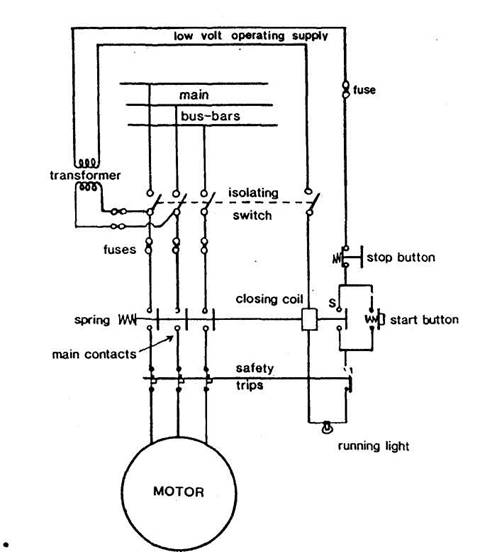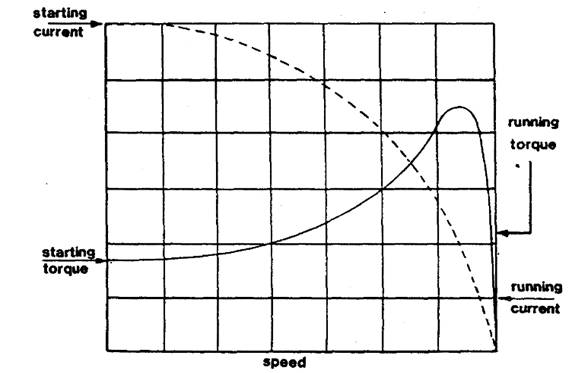Question
Sketch
a circuit diagram of a push button DOL contactor starter for 3phase incorporating
overload and short circuit protection
Indicate
on a sketch of typical characteristic curves of current and torque against
speed, disadvantages of a DOL start squirrel cage induction
motor.

Figure
Direct on-line starter circuits
Direct
on-line starting
The
device for direct on-line starting consists essentially of three contacts,
which are closed to connect the three-phase supply from the switchboard to the
stator windings of the motor (shown on Figure a).
However,
rapid operation is beneficial and to achieve this a
closing coil is used, which is energised from a low-voltage
Closing
the isolating switch makes main power available to the main contacts and, via
the transformer and rectifier, to the operating circuit.
When
the start button is pushed the closing coil is energised, and as the main
contacts close so also does the contact (S).
Release
of the start button will not interrupt the closing coil circuit because
continuity is maintained through the retaining contact (S).
The
main contacts are closed against a spring and de-energising of the closing coil
by opening the control circuit with the top button, or operation of safety
trips, will cause the contacts to open and the motor to stop.
The
closing coil acts as a no-volts trip to prevent, involuntary restarting of the
motor after a power loss (except for steering gear motors).
Disadvantages
Simple
direct on-line start, squirrel-cage induction motors have three disadvantages:
(1) High
starting current,
(2) Low
starting torque, and
(3)
single-speed operation (apart from slight slip with increase of torque).
Characteristics
are shown in Figure b.
Figure b Typical
characteristic curves for a direct on-line start squirrel-cage motor.
